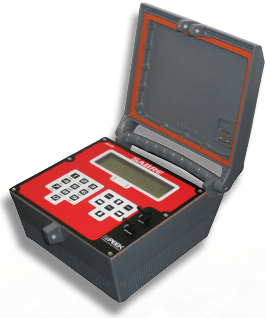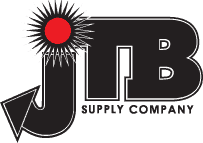ADR Sabre

Sabre™, from PEEK Traffic, is the most advanced, flexible and comprehensive portable automatic vehicle count and classification (AVCC) system in the world.
Features/Benefits
- Storing vehicle study data in 3 user selectable formats: binned, PVR or event. An industry first, Sabre™ allows you to specify any combination of data storage formats. With binned data, the Sabre™ automatically counts, classifies and summarizes data for vehicles according to standard or user defined criteria and then stores that summary data in “bins”. PVR (per vehicle record) data contains detailed information for each identified vehicle.
Event data consists of a time stamped record of each “event” sensed by the Sabre™ such as vehicle tires passing over a road tube. Each data format has its own benefits. Sabre™ eliminates the constraints of other AVCC products by allowing you to choose the best combination of formats.
- Using event records, an “unlimited” variety of studies can be produced on the Sabre™ itself. Another industry first, with the Sabre™ you can define new traffic studies and reprocess existing event records on the Sabre™ itself. There is no need to transfer the detailed data to a computer for reprocessing (although you may do so if you wish). This feature provides multiple benefits including: using existing data to perform new, entirely different studies; rerunning the data to “fine tune” class tree and/or study parameter setup; detailed analysis of unusual study results.
- High Capacity Memory
- 16 MB of main memory plus
- Up to 4 GB of replaceable SD memory
The Sabre™ standard main memory is 16MB. Such a large memory enables storage of numerous study setup files and, optionally for data from multiple studies. As a standard feature, Sabre™ also provides necessary hardware and firmware to add an industrial grade SD card up to 4GB. Use of an SD card provides very cost effective storage for multiple data files and many millions of event, PVR and/or binned data records, potentially equivalent to years of study data, if desired.
- High speed electronics and enhanced firmware provides superior accuracy. Modern electronic components, enhanced firmware and high performance circuit design allow processing of sensor data at very high speeds. Vehicle speed resolution is 0.01 mph and length resolution is 0.01 ft. This, in turn, increases the likelihood of high accuracy for information such as class, headway and gap. As an example, in a study performed by PEEK using the Sabre™ and road tubes on two lanes of free flowing highway traffic, vehicle classification accuracy was better than 98% compared to a video record of the traffic.
- High efficiency electronics combined with long life, fast charging battery. Using road tubes, Sabre™ is able to operate in the field for months before requiring a battery recharge. Better still, when the battery does need recharging it is accomplished with a high performance charging circuit in just a few hours. Firmware continually monitors and displays battery status. Additionally, the firmware includes multiple power management features such as preventing initiation of studies that may exhaust the battery.
- Multiple high speed communications ports. Sabre™ customarily provides three communications ports. An RS232 port supports serial communications at speeds up to 512 kB. Such communications may be either dedicated (including IP) or dial-up (at lower speeds). Additionally, Sabre™ has two USB ports. One supports transfer of data or setup files to or from most standard “USB drives”. With this option, study data may be gathered manually in the field very quickly, conveniently and simply. The second USB port provides connectivity for a computer to facilitate Sabre ™ setup and data manipulation.
- Industry leading User Interface (UI). The Sabre™ provides two UI options.The first operates on the Sabre™ itself and is composed of a high reliability membrane keypad combined with the largest display available for AVCC units and an advanced menu structure. In addition to high reliability, the membrane keypad has 19 large keys, able to be operated while wearing gloves.The display is four times larger than most other models to providing extensive status and setup information while reducing menu complexity. Combined, these enable quick setup and easy operations monitoring. The second Sabre™ UI option supports setup and monitoring from a computer that can be either directly or remotely connected.
- Multiple unique or enhanced firmware features. The Sabre™ firmware, while based on the proven ADR design, was written “from scratch” and includes multiple features such as:
- A unique, extended class tree structure enabling hybrid, simultaneous length and axle based classification in addition to standard FHWA or user defined structures.
- Individual road tube sensor de-bounce.
- “Auto-fill” of bin setup of speed, length, headway and gap.
- Memory availability monitor to prevent starting a study with insufficient memory.
- Ability to configure different sensor arrays per lane.
- Multi-level battery sensing minimizes damage to the battery and reduces the likelihood of starting a study, or other critical operation with insufficient battery energy.
- And more.
- Upgradeable into existing ADR1000 units. Customers who have the extremely popular PEEK ADR1000 can directly and simply upgrade their units to Sabre™, a very cost effective means of obtaining Sabre™ benefits.
Upcoming Features
PEEK is actively working to enhance the functionality of Sabre™ even further. A few features that are currently in progress include:
- Lithium, non-rechargeable high capacity battery. Optional in place of the standard rechargeable battery.
- Light weight, high performance, custom designed plastic enclosure.
- Support for loop and piezo sensors, in addition to present support for road tubes
- Solar panel.
- And more.
